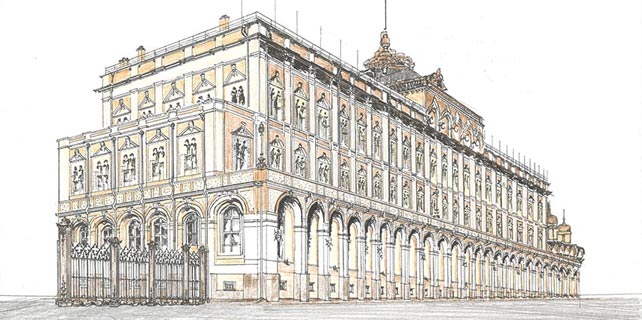Tales of China that dazzled a king
Winds that threw a voyaging civil servant off course also blew him and his story into history
It took Choe Bu, a Korean living in the late 15th century, 135 days to make the trek from a tiny town on China's eastern coast to Beijing, capital of the Ming Dynasty (1368-1644) and then back to his motherland.
The journey awed Choe's contemporaries, including the Korean king, who was so impressed that he decreed that a memoir of the feat immediately be committed to writing. The 50,000 words, written in Chinese and titled Journey Across the Sea, have in turn immortalized Choe's remarkable experience, for his generation and others that followed.
Most recently it has spawned an exhibition, underwritten by the Zhejiang Provincial Museum and the Jeju National Museum. The hundreds of exhibits, from both China and South Korea, seek to illustrate, in glittering jewelry, fragile fabric and ancient scrolls, the highly descriptive lines that Choe penned more than 500 years ago.
Its goals are more ambitious still: to fill the gap in the imagination of modern viewers. With antiques pulled from various levels of museums across Zhejiang province, the exhibition amounts to a comprehensive review of life in that part of China - known as Jiangnan, or "area south of the Yangtze River" - during the 15th century.
Today, a viewer can sample the best of Chinese culture from the 15th century without having to first spend 13 days on choppy seas. "That was how Choe got to China - by boat," says Ni Yi, curator of the exhibition, his book in her hand. Ni spent five months retracing Choe's journey.
"In 1487, Choe, a government official, was posted to Jeju, an island separated from the Korean mainland by the Jeju Strait and from China by the Yellow Sea," Ni says. "Shortly after his appointment, news arrived that his father had died back at home. So in early 1488 he boarded a ship that was to take him to Naju, his hometown on the Korean mainland. With him were another 42 people."
But instead of taking Choe home, the ship was caught in strong winds and began heading toward China. Thirteen days after leaving Jeju, the ship was washed ashore at what today is Sanmen on Zhejiang's coast.
"From the outset the journey was an adventure," Ni says.
Locals found and fed Choe, but he soon realized he had another fight on his hands after battling the forces of nature; he now had to prove to his rescuers his true identity. "In the Ming era villages in coastal Zhejiang were frequently harassed and pillaged by Wako, or Japanese pirates," Ni says. "Fearing that Choe and his company might be pirates in disguise, the villagers, kind and generous as they were, sent the group off on an overnight journey to the nearest checkpoint - under escort, of course."
For the next month Choe found himself under serious investigation twice more, in Shaoxing, and then in Hangzhou, capital of Zhejiang.
However, judging by his account, the suspicion that surrounded Choe en route to Hangzhou failed to dispel his good spirits or prevent him from soaking up all the sights and sounds of Jiangnan, the most prosperous and cultured part of China. (In his memoir, Choe did not complain of his treatment, only lamenting about the fear and anxiety the Japanese pirates had instilled in the hearts of the locals.)
Between June and November last year, Ni traveled to many of those places, trying to match the world she confronted with Choe's descriptions. Her journey is encapsulated in a 15-minute mini-documentary on view in the exhibition.
"While in Yaozhu, one of Choe's stops, I instantly recognized the pillar-like mountain mentioned in his book. And the water at Daxiba - even after so many years, I could still envision the torrents that the locals tried so hard to tame by building weirs. Moments like these were miraculous, instantly sucking you into a time tunnel. But of course, most places have changed beyond recognition."
In his book, Choe marveled at the abundance and majesty of the natural beauty he came across, from architecture to art. A meticulous chronicler, he appeared alert to any information that might be of the slightest interest to his king, for example, city layout, the construction of dams, waterways and houses.
He was also keen to record more mundane detail, for example giving a head-to-toe description of the various dress styles of the time.
However, it was the cultural life the locals enjoyed that captivated the man who prided himself on being a member of the literati in his native country. "People here make studying their job," he wrote admiringly.
















